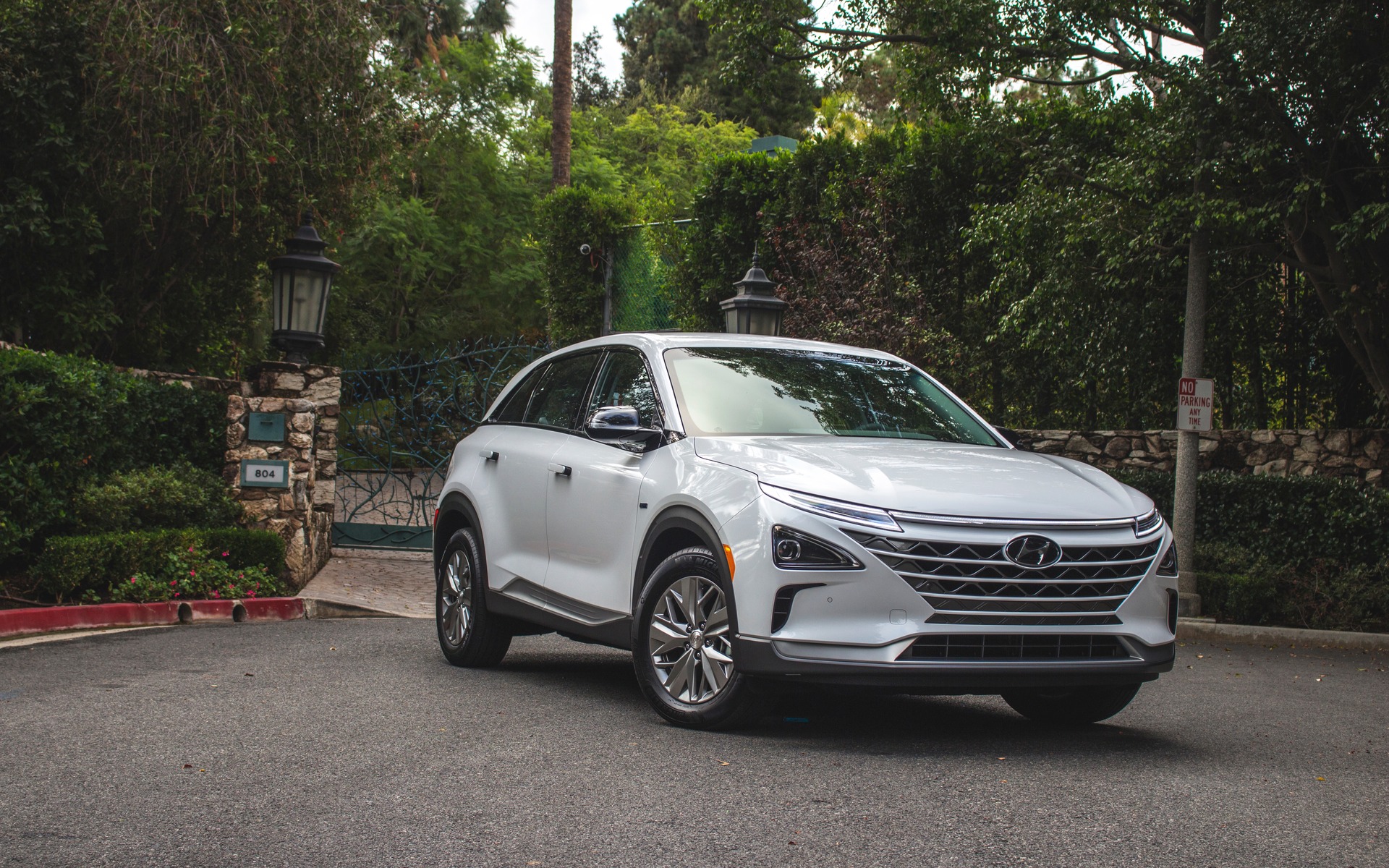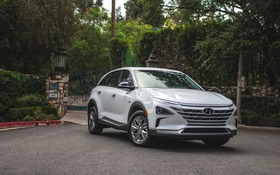2019 Hyundai NEXO: The Chicken Before the Egg

| Strong points |
|
|---|---|
| Weak points |
|
LOS ANGELES, California – Earlier this year, my colleague Gabriel Gélinas flew to Seoul, South Korea, to test drive the Hyundai NEXO, a brand-new hydrogen fuel cell-powered vehicle. At the time, the car was expected to hit Canadian roads in limited quantities by the end of 2018.
Here we are in October, two months before the official launch, and the Hyundai NEXO is poised to arrive at dealerships and be sold across the country!
- Also: 2019 Hyundai Nexo: The New Hydrogen-powered SUV is Coming to Canada
- Also: 2019 Hyundai Tucson: Staying in the Game
This represents a huge gamble for Hyundai, as hydrogen charging stations are still few and far between in Canada. In Quebec, for example, there is only one, located in the Quebec City area. A second is expected to open in 2019 in Montreal.
But why would the automaker come out with this type of vehicle with so little infrastructure in place? This is a classic case of the “chicken before the egg” strategy aimed at stimulating the development of a new market.We gave the NEXO its first North American test drive in Los Angeles, California.

Getting the Facts Straight
It’s easy to get mired in debate and overwhelmed by misinformation about hydrogen fuel cell electric vehicles (FCEV). Some argue it’s an extremely dangerous type of car that can explode at any moment. Others will tell you that a new cartel is being established that will control gas prices. Some even contend that hydrogen production often turns out to be very harmful to the environment and a lot more energy-consuming than extracting oil.
The reality is quite the opposite.Hydrogen is not new. It’s part of our very makeup—down to the water we drink. However, hydrogen is often used and discarded by Canadian manufacturers and the country currently possesses a significant surplus of the material.
What’s more, there are already companies that specialize in the clean and renewable transformation of the gas. Take Air Liquide, for example, a French firm that sells clean hydrogen developed with Quebec hydroelectric power at its facility in Varennes on the South Shore of Montreal.
As for the fears about sudden explosions, there is much less risk of that happening than with a gas tank. Hydrogen is a very light gas that dissipates quickly in the atmosphere. Furthermore, in the very unlikely event that the tank is blocked, the gas will escape so quickly into the air that the risk of ignition will be very low.
But why use it to power a car?
A hydrogen car is actually an electric car, except that it eliminates the lithium battery almost entirely and is not dependent on the electrical grid.
Instead of an enormous battery, the car contains a hydrogen fuel cell. Through a chemical reaction that is somewhat like the opposite of electrolysis, it transforms the gas into electricity to supply the motor.Thus, the car creates its own electricity.Sure, a small lithium battery is still necessary to help store the energy produced, but it is much smaller than that of a conventional electric vehicle.
What comes out of the exhaust? Just vapour. And like with a gas-powered car, it takes only a few minutes to fill the tank. Electric cars, on the other hand, require several hours to recharge—at least for now.
In the end, the major advantage is range, which promises to be equal to that of gas-powered cars and sometimes even longer. In the case of the 2019 Hyundai NEXO, the automaker is promising a total range of 600 km.
The NEXO is not the first of its kind as it represents the manufacturer’s second attempt at this type of vehicle after the Tucson FCEV that was on the market for limited lease only in 2013. At present, Toyota and Honda also have FCEV cars: the Toyota Mirai is available for lease in target regions in Quebec, while the Honda Clarity Fuel Cell is only available in California and for lease only. Thus, the NEXO is the first hydrogen-powered vehicle that Canadians will be able to buy outright.
The idea behind releasing the car here is to put a vehicle on the road in the hopes that the necessary infrastructure will follow. Talks are already underway with oil companies like Shell and Irving about adding hydrogen charging stations to gas pumps.

An SUV Like any Other
Not much bigger than a gas-powered Hyundai Santa Fe, the NEXO features a sizeable trunk and does not sacrifice versatility despite its innovative propulsion system. Hyundai is promising 1600 litres of total cargo capacity with the rear bench lowered, which is a smidge less roomy than its gas-powered sibling the Hyundai Tucson (1754 litres) or competitors like the Mazda CX-5 (1852 litres).
For now, the NEXO is the only FCEV to offer this much versatility.
Powered by a 120-kW motor developing 161 horsepower and 291 lb.-ft. of torque, the NEXO isn’t as fast or as agile as its kid brother, the Kona, but it’s smooth, accelerations are prompt and the quality of the ride is on par with the best gas-powered luxury cars on the market. We also like the cabin overall: spacious, comfortable, quiet and featuring a commendable finish and design utilizing high-quality, environmentally-friendly materials. The infotainment interface, incorporated in an enormous 12.3-inch screen with both touch and physical command options, is attractive, easy to grasp and intuitive, and features the most recent connectivity technology.
Hyundai protects the NEXO, and its battery, under an 8-year/160,000-km warranty. For the time being, the price has not been announced, but judging by the competition (for example, the Toyota Mirai), it’s likely to be quite expensive. We also don’t know the production cost, since hydrogen costs have not yet been adapted to car propulsion; nor do we know if the infrastructure will grow as Hyundai hopes it will. For the consumer wanting to get one, it’s a risk.
In any case, the Hyundai NEXO represents an effort by an automaker to offer an alternative to gasoline. With lithium batteries becoming increasingly dynamic, who knows if the hydrogen-powered car will catch on? One thing is certain: we are witnessing a fascinating revolution in automobiles and consumers will soon have several environmentally friendly options to choose from.











